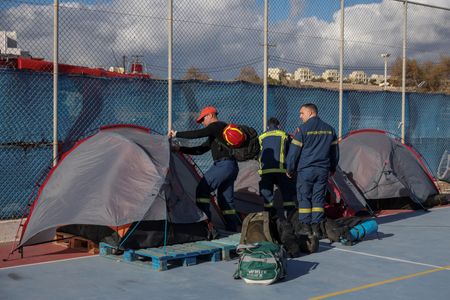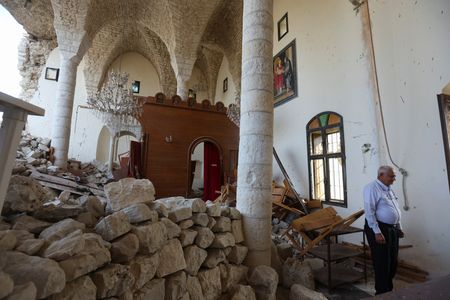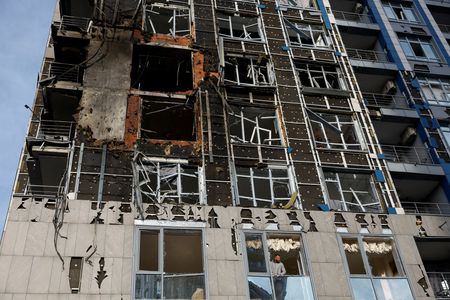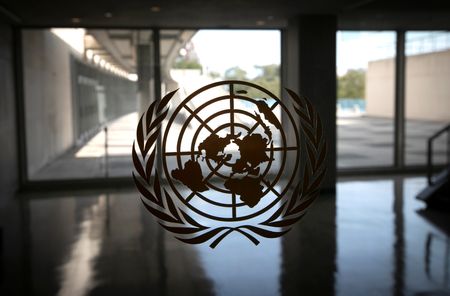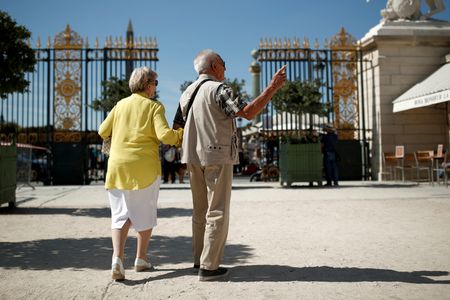ATHENS (Reuters) – Greece on Tuesday announced temporary measures to support workers on its popular tourism island of Santorini as earthquakes rattled the island for a second week.
Thousands of earthquakes measuring up to 5.3 magnitude have been recorded in the Aegean Sea off Santorini since February 1, prompting authorities to declare it in a state of emergency for at least a month.
Authorities have shut schools on Santorini and nearby islands and deployed rescuers and the army. More than 11,000 people, among those many seasonal workers, have fled.
Greece’s labour ministry said it was taking steps to preserve jobs and provide financial support to workers and businesses on Santorini, one of Europe’s most popular summer getaways whose economy depends heavily on tourism.
Under the measures, businesses could suspend workers’ contracts until March 3 but layoffs were prohibited. At the end of the suspension period, businesses would need to retain the same number of jobs are before, it said.
Workers whose contracts were suspended were also entitled to state compensation of up to 534 euros in cash payments for 30 days.
On Monday, the union representing employees in the food and tourism industry (POEET) raised concerns that workers were left unprotected.
“For almost two weeks, each business has been deciding on its own whether to suspend its operation or not, resulting in hundreds of employees currently having no income and more importantly, no insurance contributions,” it said.
An island of around 20,000 residents, Santorini was formed by a volcanic eruption in 1600 BC. It draws more than 3 million visitors a year and crowds cram its narrow cobbled streets for views of its world-famous sunset.
Scientists say the heightened seismic activity in the area – which has been felt as far away as Athens – is unprecedented even in a country as quake-prone as Greece and could last for weeks.
They say the quakes were not related to the volcano but came from undersea fault lines in the surrounding area and have not ruled out the possibility of a bigger tremor.
(Reporting by Karolina Tagaris; Editing by Angus MacSwan)

